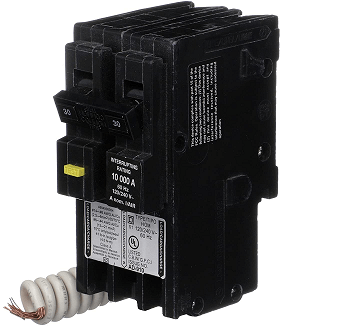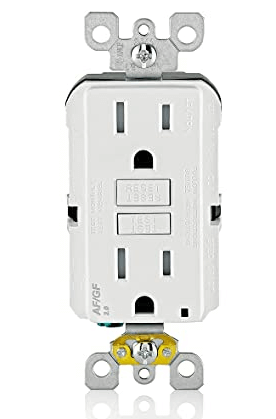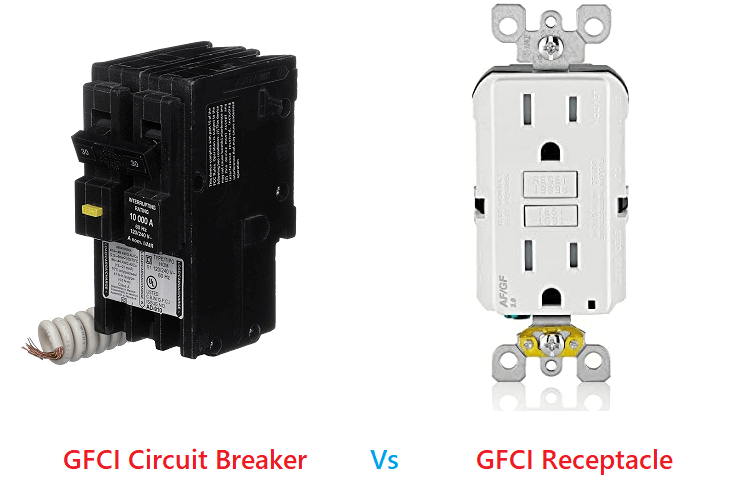The risk is higher when electricity runs through wet areas like the bathroom, kitchen, and laundry room. In order to prevent electrical shocks and electricity risks, you need to install GFCI circuit breakers or receptacles. GFCI stands for Ground Fault Circuit Interrupter. In this article, we will compare in detail between GFCI circuit breaker and receptacle.
What Is a GFCI Circuit Breaker?
When you install a GFCI breaker, every power outlet in the home will have GFCI protection. It is directly installed into the electrical panel that helps to protect the circuit’s receptacles. GFCI circuit breakers can even protect the appliances and wiring. It is simple and you can even get the one that can come with AFCI protection. GFCI circuit breakers can provide complete circuit protection for homes.
What Is a GFCI Receptacle?
A GFCI receptacle is typically in a red or white reset button. It is part of the individual power outlet. When there is an imbalance in the current, the GFCI receptacle will shut off automatically. There are even the ones that can provide multi-location protection. A GFCI receptacle provides individual outlet protection and can even protect every downstream from the same circuit. It is integrated into the electrical outlet and lets you install it conveniently. However, you will have to use the circuit for multi-location protection with a single GFCI receptacle. You can even wire a GFCI receptacle for two different levels.
What’s The Difference Between A GFCI Breaker And GFCI Receptacles?
A Ground fault circuit interrupter (GFCI) can protect the house as well as other outdoor locations. When it comes to a GFCI circuit receptacle, it helps to protect from ground fault shock when the electric current goes out of the established circuit. It is very helpful when the outlet is located near a water source or earth. Both GFCI circuit breakers and GFCI receptacles aim to offer protection. However, they have their own functionalities and limitations.
GFCI Receptacle vs Breaker: Functionality
If we have to recognize a GFCI receptacle, it comes into the electrical outlet and has a white or red reset button. When there is a possible overload, a GFCI receptacle can instantly trip the circuit as it can measure the amount of energy. To make sure there will be maximum protection, a GFCI receptacle can be installed rather than a standard outlet. The advantage of having a GFCI receptacle is that you can choose from multiple location options. The disadvantage is that the portion between the GFCI outlet as well as the main service panel will be left unprotected. Keep in mind that a GFCI circuit breaker can protect the entire circuit. Installing a breaker can offer complete GFCI protection including appliances, devices, and wiring. You can even find the one that can come with dual-function circuit breakers so that there will be AFCI protection. It can provide you with entire circuit protection that lets you have peace of mind. Another great advantage of having a GFCI circuit breaker is that you can even install a receptacle wire with the GFCI breaker. In doing so, you will be able to adequately protect the entire circuit.
GFCI Receptacle vs Breaker: Usage
You will have to note that you will not be able to install GFCI receptacles behind appliances or furniture. The primary reason for this is that when the receptacle trips, you will have to reset the location. If in any case, you happen to require protection in these areas, you can opt for GFCI breakers. All you have to do is to go to the service panel for resetting when there is any tripping. GFCI receptacles will let you replace or work on them quickly and easily. However, when there is any problem with the GFCI circuit breaker, you will have to look for the service panel which can be difficult for many. When it comes to usage, you will have to consider this size. Generally, a GFCI receptacle is larger when you compare it with standard ones. It can affect the space and you need to look for the wall box. For this reason, it will be better to go for a GFCI circuit breaker. Now let’s come to the installation part. A GFCI receptacle will let you have easy installation. The downside is that you need to install it in different locations which can cost you more. For a GFCI breaker, you need a professional installation as it is within the service panel.
GFCI Receptacle vs Breaker: Cost
The cost is another important aspect that you will always have to consider. A GFCI breaker will cost you over $40 which is relatively expensive. The cost of a GFCI receptacle is around $15. If you don’t have to worry about cost, it will be best to go for a GFCI breaker.
GFCI Receptacle vs Breaker: Requirements
According to the National Electrical Code (NEC), local electrical codes have particular requirements. These codes have specific rules in certain areas and can vary from national electrical codes. You must always look for the local building code department before making the installation. These codes will determine whether you need to go for a GFCI outlet for a breaker. Receptacles have to be installed near basements, pools, spas, utility rooms, or other outdoor spaces. Keep in mind that you are not permitted to install it behind the furniture. It is also not permitted to install behind appliances, freezers, or refrigerators. Breakers must be installed in easy-to-service areas. You can install it in sub-panels and electrical panels. For spas, it even requires a GFCI disconnect. However, breakers are not permitted for clothes closets and bathrooms.
Comparison Table: GFCI Circuit Breaker Vs GFCI Receptacle
How do you know if a GFCI Breaker or Receptacle is Right for you?
It is very important to decide beforehand whether to opt for a GFCI breaker or receptacle. There are different scenarios when GFCI breaker and receptacle are suitable respectively.
When to Install a GFCI Circuit Breaker?
When the majority of outlets need GFCI protection. When you need protection for the entire circuit. When there is not enough space for receptacles. When there are special cases like heated swimming pools.
When to Install a GFCI Receptacle?
When you don’t want additional expenses of installing a GFCI breaker. When the individual receptacle is far from the GFCI protection breaker box. When a single circuit is powering many outlets.
Conclusion
There is no doubt that both GFCI circuit breaker and GFCI receptacle are great for protection against electrical shocks. However, it totally depends on the user requirements and preferences which one is going to be best for you. We have differentiated both the products and illustrated when to install them for complete protection. Comment * Name * Email * Website
Δ








![]()